Highlights of the Vatican Museums
In this travel guide, we are going to discover the highlights of the Vatican Museums. Vatican City is an independent city-state that occupies an area of about 100 acres within the city of Rome.
In this travel guide, we are going to discover the highlights of the Vatican Museums. Vatican City is an independent city-state that occupies an area of about 100 acres within the city of Rome.
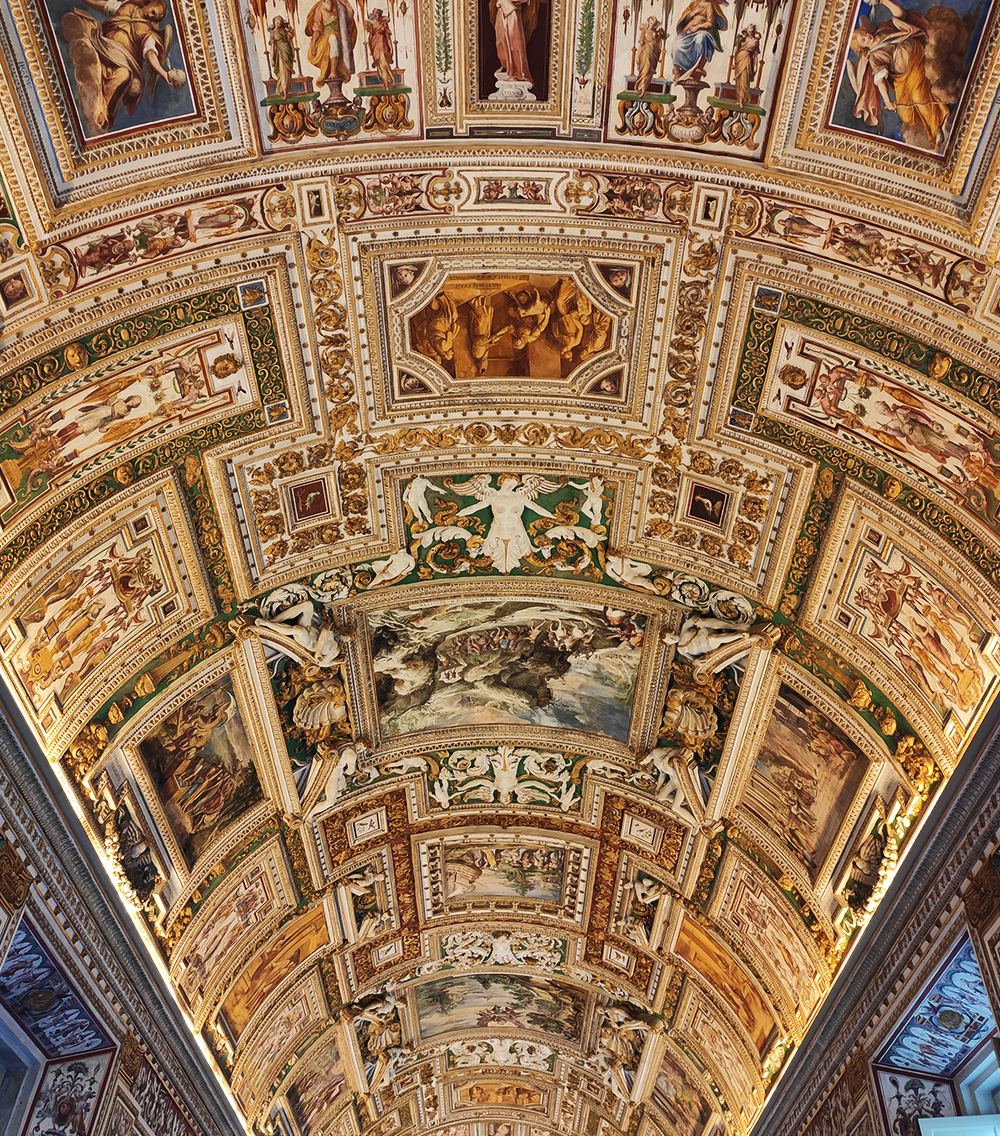
The city-state has its currency and its government, with the Pope serving as the head of state. The history of Vatican City dates back to the early days of Christianity. Back then Emperor Nero blamed and executed Christians for a blaze that destroyed much of Rome. He buried the executed, including St. Peter, on the site where the Basilica now stands.
Αpart from St. Peter’s Basilica, which is certainly something admirable, the Vatican Museums are something that no one should miss during their visit to Rome. Let’s explore the highlights of the Vatican museums!
The Vatican Museums are responsible for preserving and exhibiting various artworks and objects that have been gathered by the Catholic Church and popes throughout history. Their vast collections comprise of diverse art forms ranging from ancient sculptures, contemporary art, Renaissance paintings, and archaeological remnants.
The history of the museums’ collections begin with the Pope Nicholas V and the rooms that he chose private chapel. The first one chronologically is the Niccoline Chapel decorated with fresco paintings by Fra Angelico.

The also known as Snail Staircase, created by Giuseppe Momo in 1932, features two interconnected staircases that spiral in a double helix shape. It’s worth noting that Momo designed this structure before the discovery of DNA’s double helix structure. One of the staircases ascends while the other descends, meaning that you can observe people moving in opposite directions but never cross paths with them.
This spiral staircase of Vatican Museum is counted among the ten amazing staircases of the world found indoors. Remember to glance upward once you’ve descended or ascended the stunning Snail Staircase. Positioned above it is a geometric canopy that delivers light to brighten the stairs.
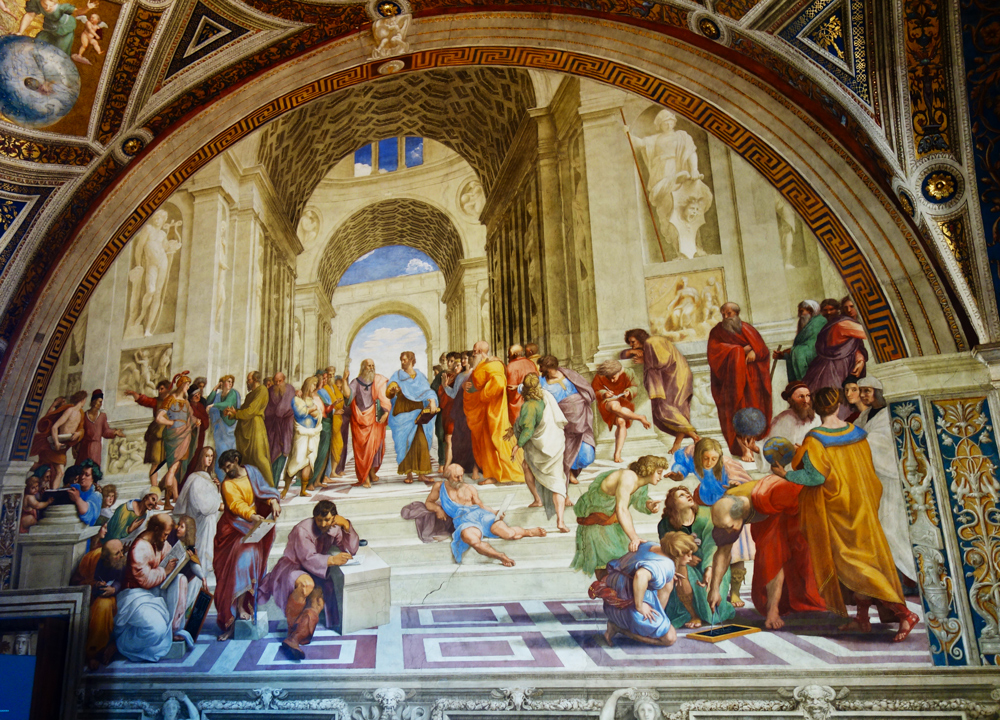
This fresco painting showcases Raphael’s impressive mastery of perspective, composition, and color and represents the pinnacle of Renaissance art. The painting portrays an assembly of ancient Greek philosophers, mathematicians, and scientists, such as Plato, Aristotle, Pythagoras, Archimedes, and Heraclitus. Additionally, the Italian artists Leonardo da Vinci and Michelangelo are included in the artwork, depicted as Plato and Heraclitus, respectively.
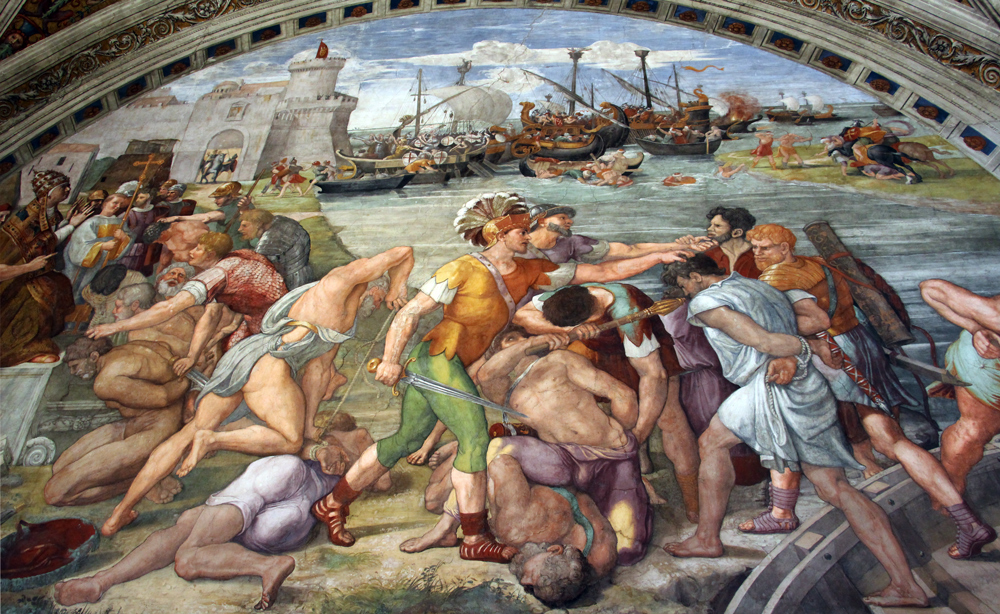
The artwork drew inspiration from the naval encounter that occurred in 849 between the Arab and a Christian alliance comprised of ships from the Papal, Neapolitan, and Gaetan regions. Pope Leo IV, portrayed with the physical attributes of Pope Leo X, is depicted in the painting expressing gratitude after the storm destroyed the Arab vessels.
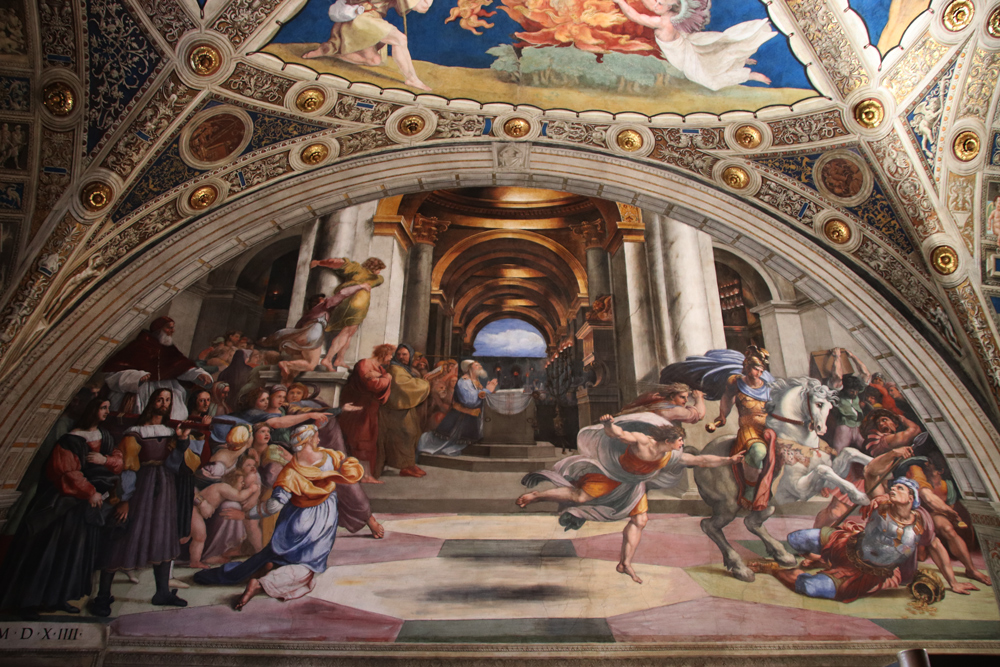
Raphael’s “The Expulsion of Heliodorus from the Temple” portrays the event where a horseman accompanied by two young people expels Heliodorus from the Temple in Jerusalem while he tries to seize its riches and valuables. This story is derived from a biblical incident mentioned in 2 Maccabees, where the king of Syria commands Heliodorus to confiscate all the treasure from the Temple in Jerusalem.
An iteresting fact about this painting is Julius II, positioned on the left, with a complete white beard, which was an uncommon attribute for popes during the 16th century. Legend has it that in 1510, he pledged not to shave his beard until the French forces had been driven out of the Italian Peninsula. However, he passed away three years later with his beard still intact.
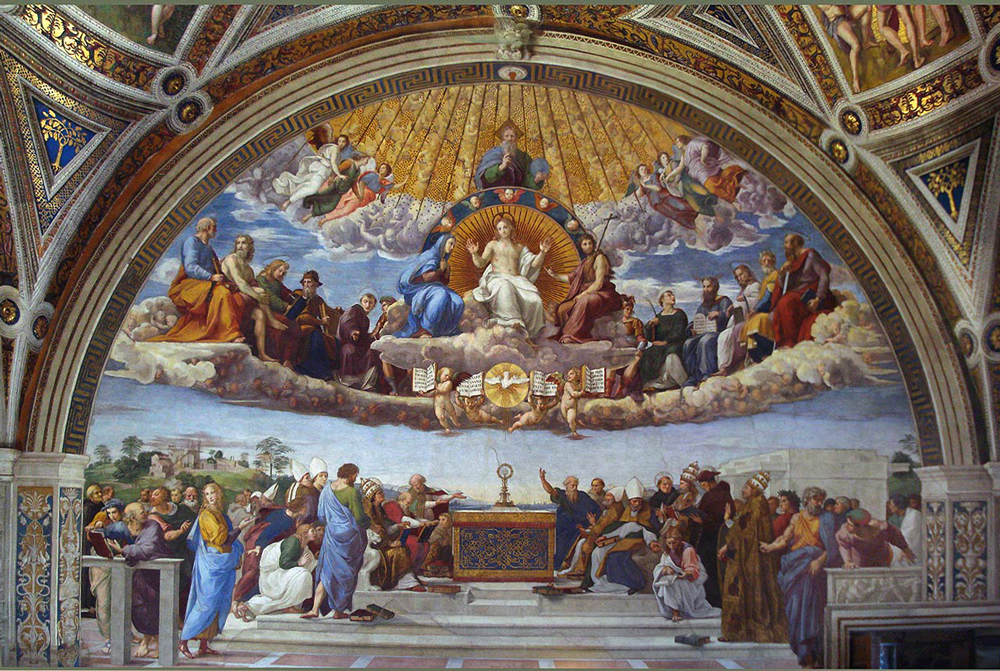
“The Disputation of the Holy Sacrament,” also recognized as the Disputation over the Blessed Sacrament or the Triumph of Religion, is a painting created from 1508 to 1511. The artwork symbolizes the supremacy of Christianity over the various philosophical schools portrayed in the “School of Athens” fresco painted on the opposing wall.
Dissimilar to the philosophers in the “School of Athens” fresco, who are assembled inside a domed structure, the theologians depicted in the “Disputation of the Holy Sacrament” make up the architecture of the Church. They constitute a single entity, joined together in a heavenly apse, located on either side of the Trinity and the Eucharist, which symbolizes the body of Christ when it is consecrated.

In this artwork, Raphael establishes himself as a true Renaissance master by narrating a tale recounted in the Acts of the Apostles, whereby Saint Peter is imprisoned for the second time in Jerusalem, but with the help of an angel sent by God, he manages to break free
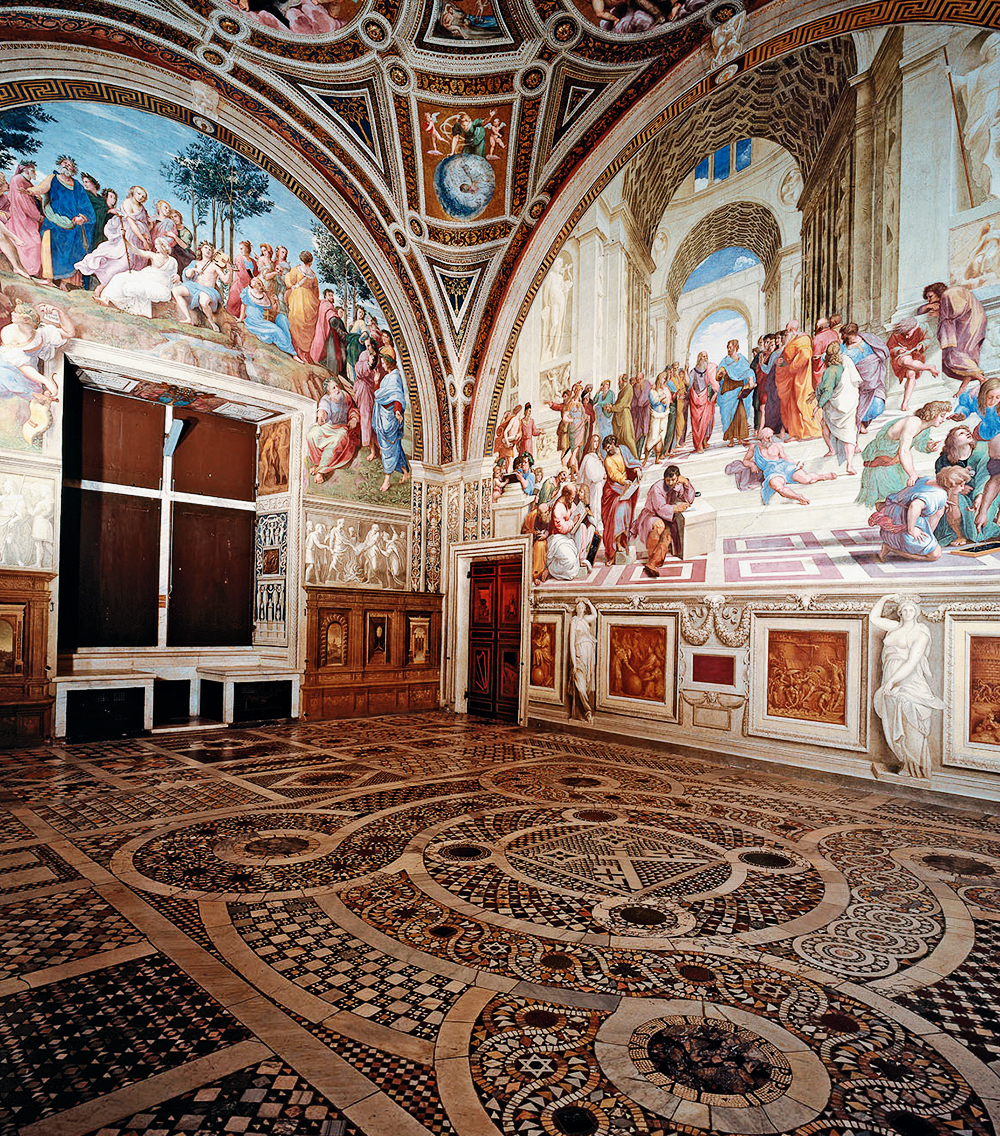
It is the most well-known fresco in the room. It depicts the fire that broke out in the Borgo Vaticano neighborhood in 847, just in front of St. Peter’s Basilica. Legend has it that Pope Leo IV extinguished the flames miraculously by blessing them from the Benediction Loggia and saved the people. Additionally, the painting alludes to the burning of Troy, and the muscular man on the left carrying an older man on his shoulders is reminiscent of Aeneas carrying his father Anchises to safety.
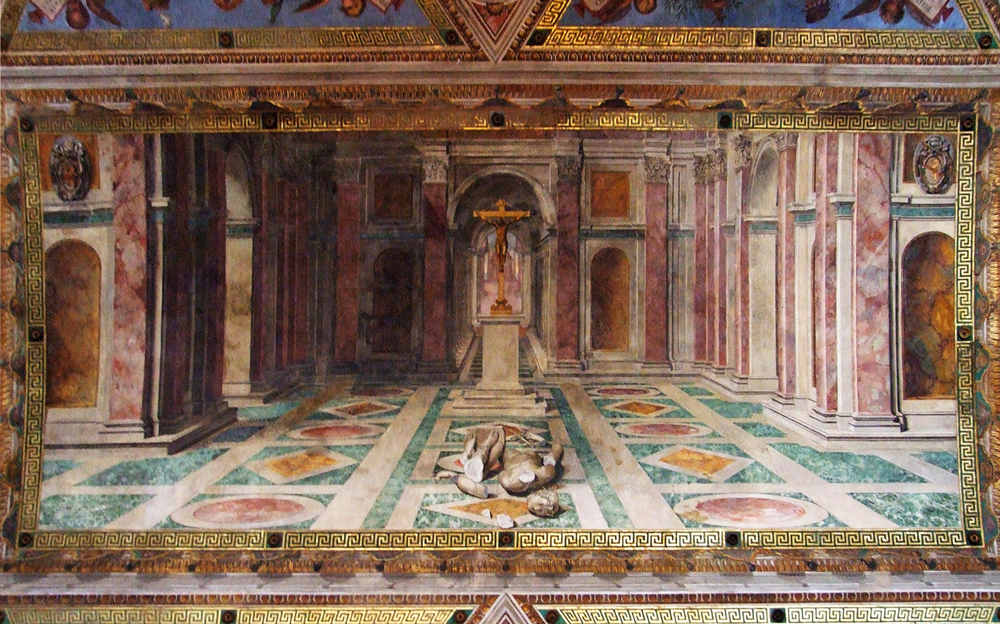
Gregory XIII commissioned the ceiling fresco, which was completed during the reign of Pope Sixtus V. The project started in 1582 and ended in 1585. The fresco, created by Laureti, features a remarkable perspective of depth that commemorates Constantine’s destruction of all pagan idols in Rome. The fallen pagan idol on the ground symbolizes the removal of pagan gods and their replacement with the image of Christ on the cross.
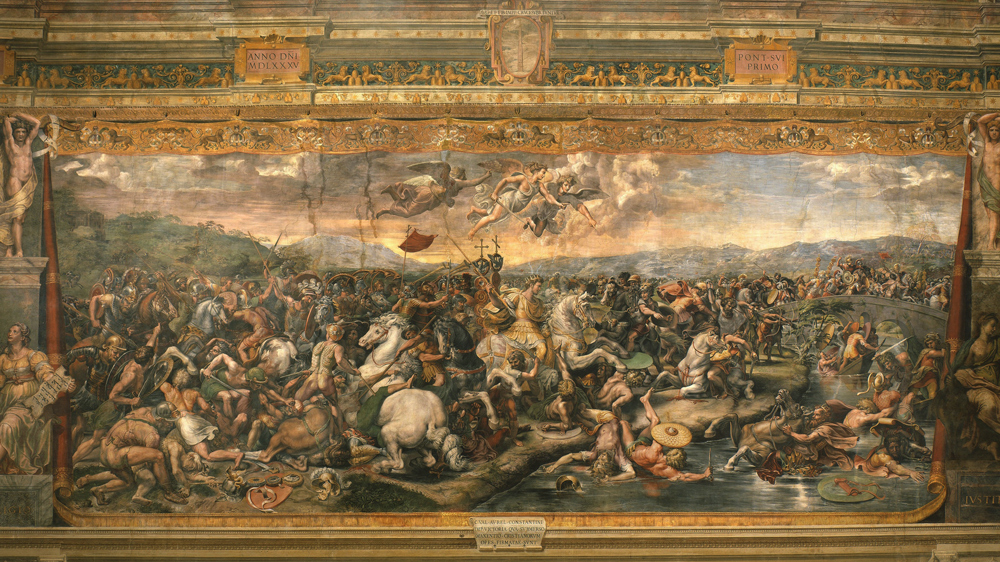
It depicts the historical event that occurred on October 28, 312, involving the two Roman Emperors, Constantine I and Maxentius. According to legend, Constantine had a dream in which a cross appeared in the sky and a voice instructed him to use the cross as his standard to ensure victory in the battle at Ponte Milvio.
Gallery of Maps is not only notable for its collection of maps but also the stunning ceiling, which commands attention in the room.
Ignazio Danti, a 16th-century artist, was commissioned by Pope Gregory XIII to create a collection of maps that were painted as frescoes onto the wall panels of the Gallery of Maps in the Vatican.
The maps provide a fascinating depiction of Italy and its regions during the 16th century, offering insight into the region’s historical and cultural landscape. It is noteworthy that Italy did not exist as a unified country during this period.
The Gallery is divided into two parts, with the Apennine mountains serving as the boundary between them. One side of the Gallery displays the regions near the Tyrrhenian Sea, while the other side shows the regions adjacent to the Adriatic Sea.
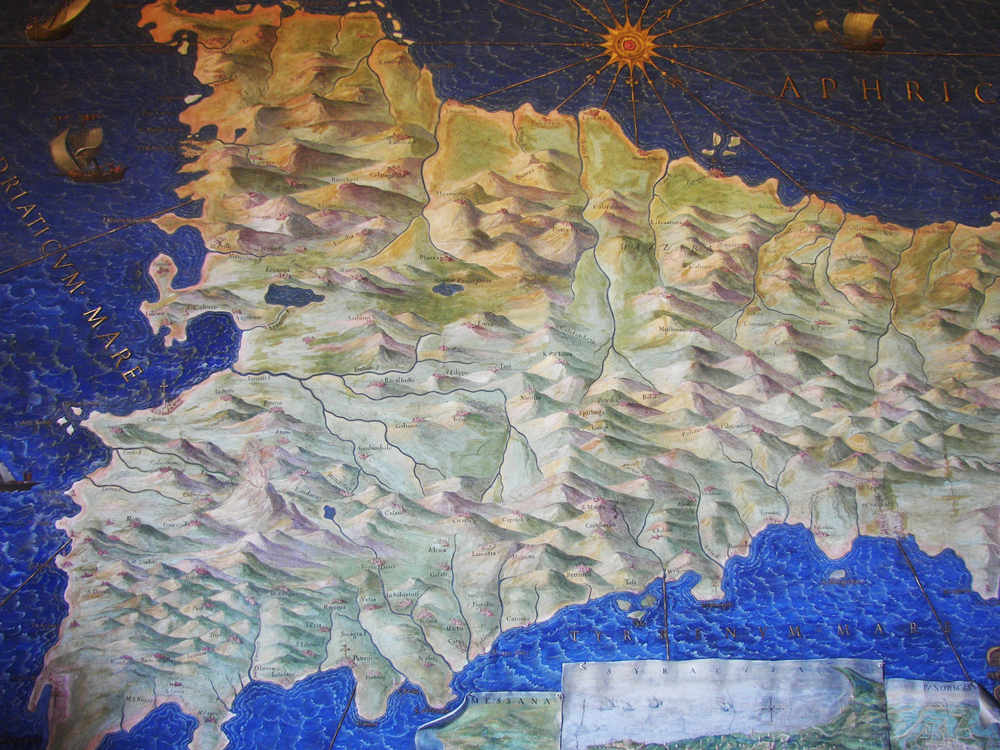
The map of Sicily in the Vatican Museums is a 16th-century map painted by Ignazio Danti as part of the Gallery of Maps. While the map is considered to be very accurate in terms of geography, it is unusual in that it is upside down. It is believed that the map was painted this way to represent how Sicily would have looked if one were approaching it from the direction of Rome. The map is part of a larger collection of maps that were painted as frescoes onto the walls of the Gallery, which was commissioned by Pope Gregory XIII in the late 16th century
The map of Venice in the Vatican Museums is a large-scale map of the city of Venice, Italy, created by Jacopo de’ Barbari in 1500. It is known as one of the earliest accurate depictions of a city in existence. Almost all the streets and canals are still as they were back then as they are today.
This map depicts the region of Lazio, the area surrounding Rome. The bottom-hand corner of the map displays a close-up view of the city of Rome itself. Several recognizable monuments are visible in the map among of them St. Peter’s Basilica, which was still under construction during the map’s creation. By observing carefully, you will observe that a square hasn’t yet been built with the huge colonnade. It would take 50 more years for Bernini to construct it.

The ceiling is a stunning example of Renaissance art and is definitely worth taking the time to admire. It is a beautiful and intricate work of art that was painted in the 16th century and is designed to create the illusion of depth while it gives the impression that you are looking up at the sky.
It was painted by Giovanni Antonio Vanosino in the late 16th century and depicts scenes from the life of Pope Gregory XIII.The central panel features the pope being presented with a globe by an angel, symbolizing his role in promoting geography and mapmaking.
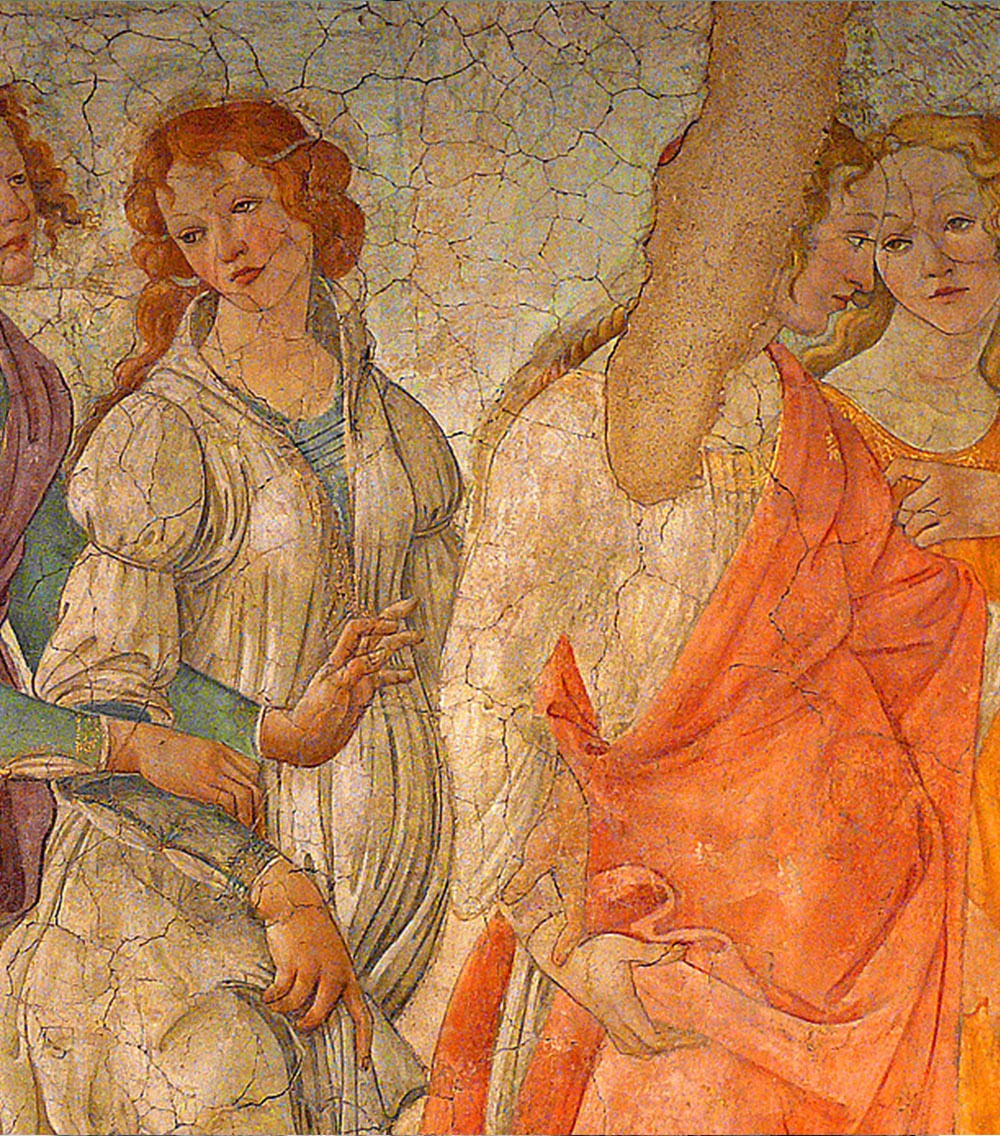
The Gallery of Tapestries exhibits a vast collection of tapestries crafted by Belgian tapestry makers under the artistic direction of the famous painter Raphael Sanzio.
Tapestries made of wool, silk, and precious metal threads were highly valued for their ornamental value and also used to warm up rooms in the Early Middle Ages. The shine from the metal threads and the textiles used gave the tapestries a beautiful quality. Tapestry makers were in high demand and often made more money than painters. In the Sistine Chapel, tapestries absorbed heat from braziers and helped to warm up the chapel. Today, the Vatican Museums use air conditioning in this room due to its historical use of tapestries for warmth.

The Resurrection of Christ tapestry was originally displayed in the Sistine Chapel in 1531 before being relocated to the current gallery in 1838. It depicts a victorious Jesus emerging from the tomb where he was buried, standing on the stone that once sealed the entrance and holding up his right hand with the three-finger symbol of the Holy Trinity. The Flemish designers included a unique feature in the tapestry: as you walk past it, Jesus’ eyes seem to follow you, conveying the message that he is always watching.
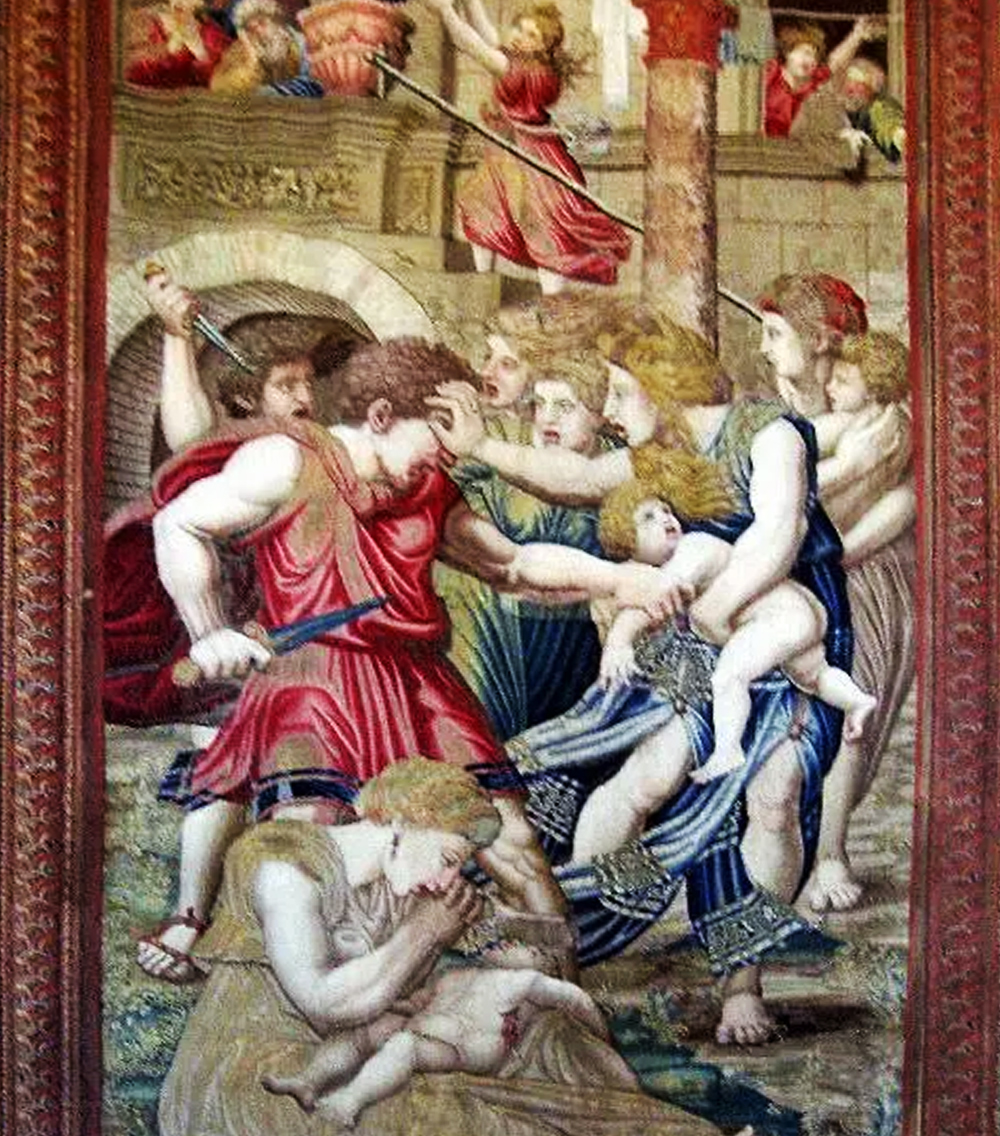
The collection comprises three tapestries narrating the tale of King Herod’s command to slay male infants under the age of two in search of the newborn king, Jesus. The objective was to capture Jesus, but he and his family escaped the massacre.
The Sistine Chapel is a famous church built in the late 1400s and is a significant attraction of the Vatican, receiving many visitors. While the Last Judgement by Leonardo da Vinci is a prominent feature on the ceiling, it’s important not to overlook Botticelli’s long murals. The fresco on the ceiling is incredibly detailed and intricate, and it’s worth taking a moment to appreciate this masterpiece.
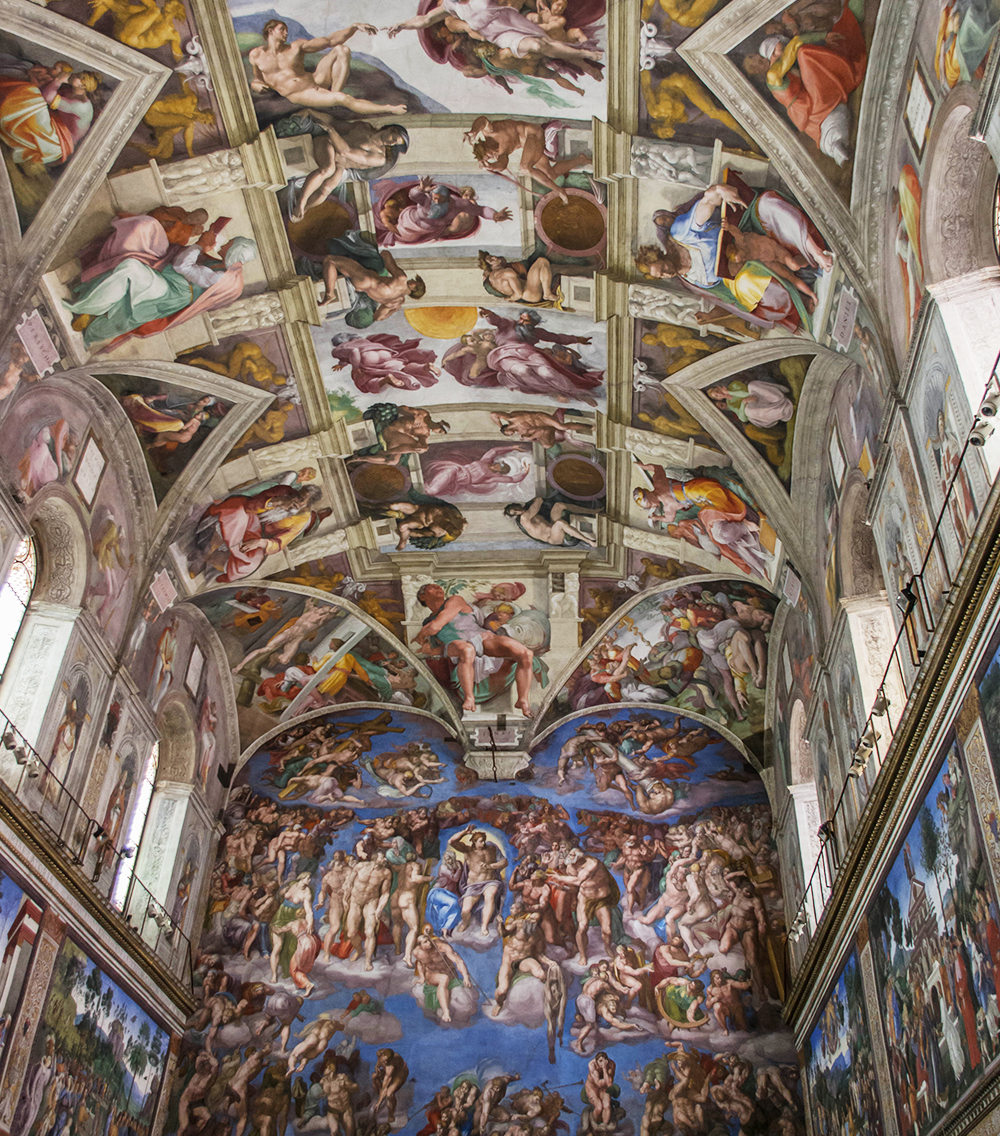
It was painted by the famous Italian artist Michelangelo, who spent four years creating the intricate frescoes on the ceiling. The paintings illustrate the beginning phases of the universe’s creation, as described by the religious beliefs of Judaism, Christianity, and Islam. They portray a shared account from the holy book of Genesis that outlines the formation of everything, in accordance with religious doctrine. The ceiling is also notable for its artistic techniques and innovations, such as the use of perspective and foreshortening to create a sense of depth and movement.
Take time to see:
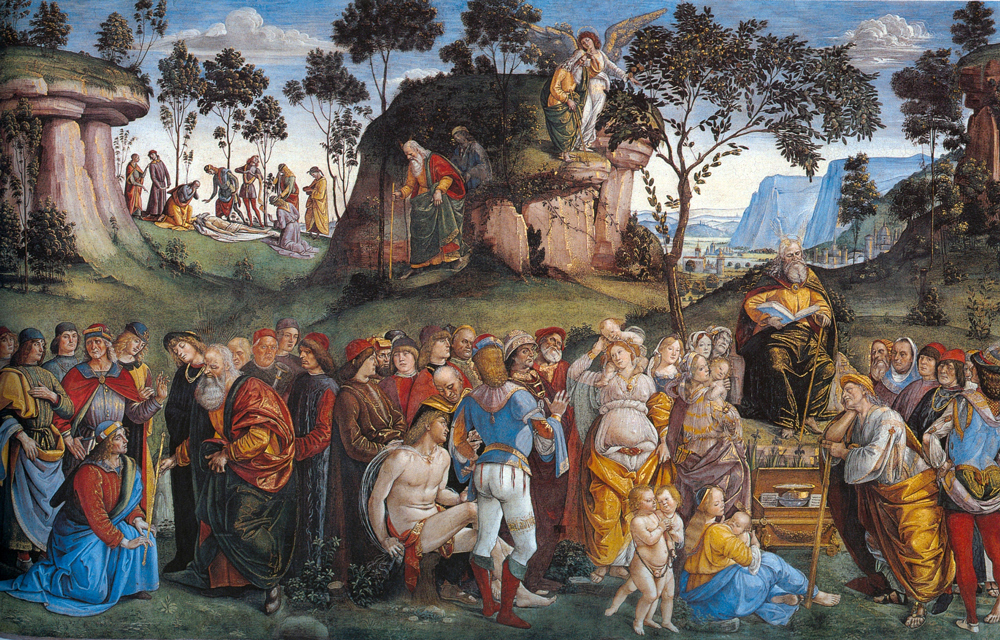
The fresco depicts the final event in Moses’ life, divided into two parts: a front section containing two scenes and a back section featuring three additional scenes and a landscape on the right. Throughout the cycle, Moses can be identified by his yellow clothing and green cloak. The painter utilized gold paint to a great extent.
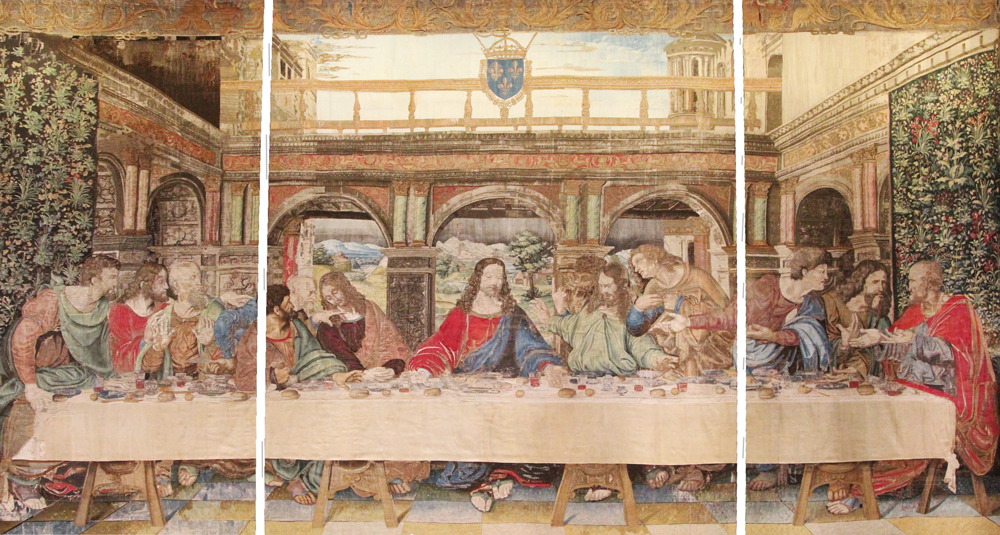
The Last Supper has been a widely depicted subject in art, with numerous paintings showcasing unique features. One such painting is Cosimo Rosselli’s version. The artwork portrays Jesus sharing the news of his impending death with the disciples after distributing bread and wine. Despite the news, the expressions of the apostles in the painting do not reflect surprise, as the focus during the Renaissance period was on ideal beauty rather than realism. The painting depicts Judas, the betrayer, sitting on the opposite side of the table and holding a sack of silver coins.
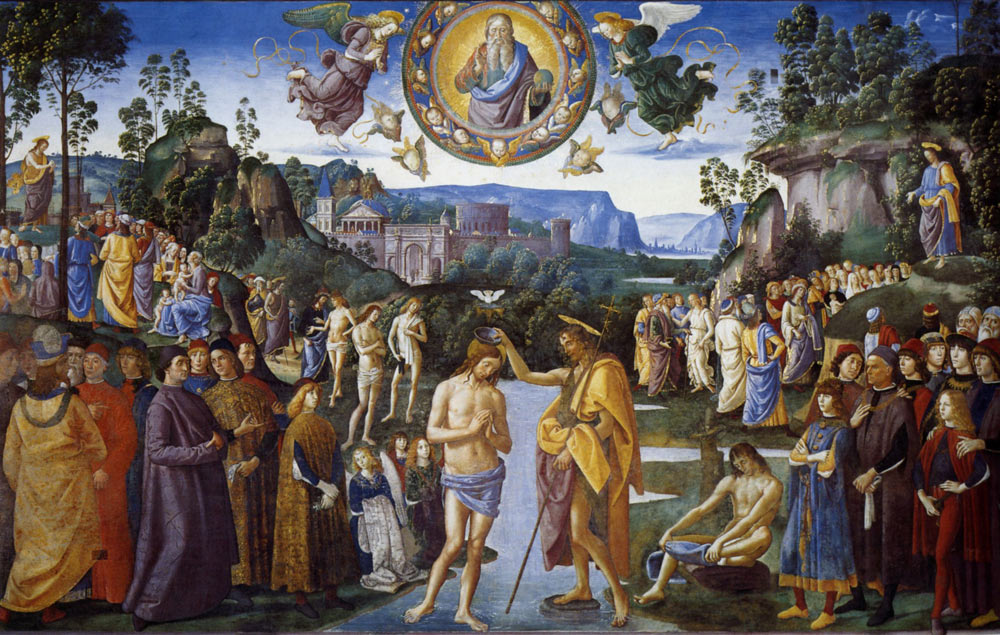
This painting marks the true commencement of Jesus’ journey towards becoming the messiah. Positioned on the right-hand side of the artwork, John the Baptist can be seen conversing with a group of people, while at the back left, Jesus is seen preaching to another crowd. However, the focal point of the painting is in the center where John the Baptist is shown pouring water over the devout Jesus’ head. Notably, the painting also depicts God overseeing the entire event from above.
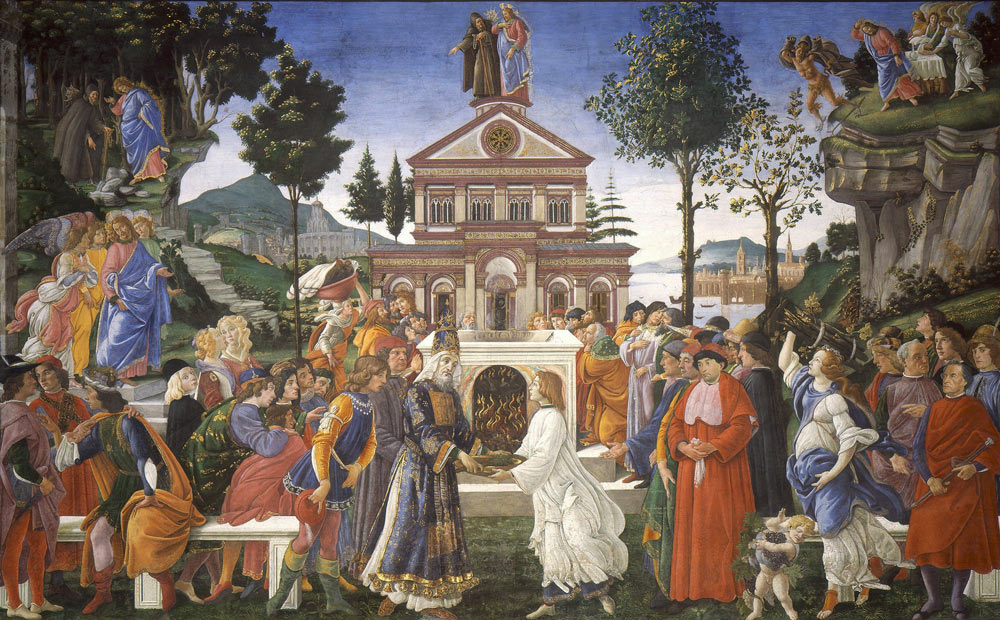
The painting depicts several instances where the devil attempted to dissuade Jesus from becoming the Messiah. One scene shows Satan disguised as a hermit, requesting Jesus to perform a miracle to test his faith. In another scene, Satan tries to persuade Jesus to jump off the temple, reminiscent of the Santo Spirito church construction in the Vatican. The painting concludes with Jesus throwing Satan off a cliff. In the center of the painting, a sacrificial rite is depicted, representing Jesus’ ultimate sacrifice for mankind. Some art historians interpret the scene as an allegory with Moses and Jesus, with the sacrifice representing Jesus’ sacrifice for humanity.
Michelangelo’s fresco, painted as one of the last additions to the Sistine Chapel, took nearly 10 years of his life to complete. The artwork stands at an impressive height of 42 feet and width of 39 feet, with the painting process alone taking five years. It is a remarkable feat considering Michelangelo’s age of 61 during the painting process. His work is widely considered as one of the best paintings in human history, solidifying his place as one of the greatest artists of all time.
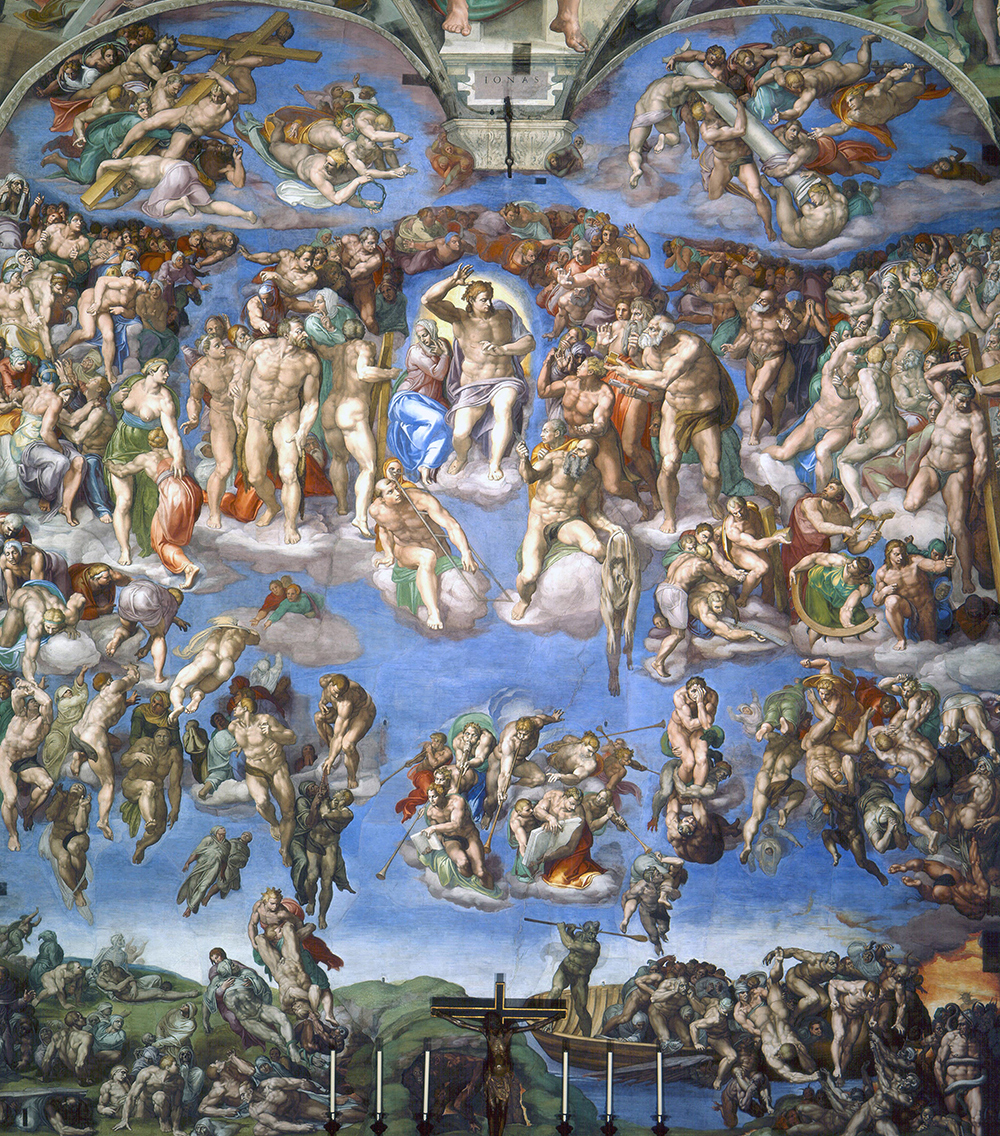
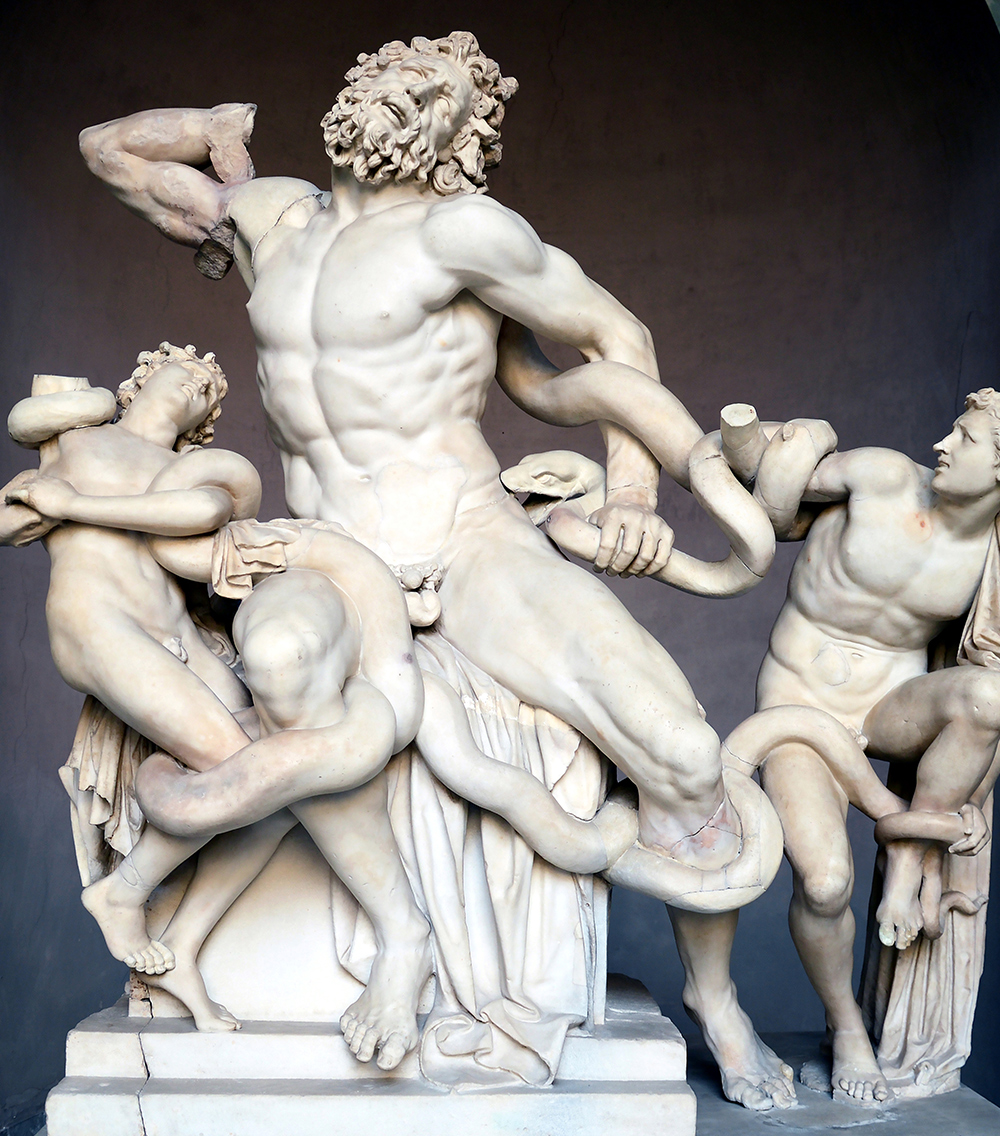
The Laocoön Group of statues was discovered in 1506 on Esquiline Hill, and it is believed to be an original Greek statue created in 40 B.C. The statue depicts a scene from the “Aeneid” by Virgil, where Laocoön, a Trojan priest, warns his people against the Trojan horse sent by the Greeks. As punishment, Athena sends two serpents to kill him and his sons. The statue was missing its right arm, leading many artists to create their own renditions of it, with the arm pointing straight up. However, Michelangelo realized that the arm should be bent based on the body movement depicted in the statue.
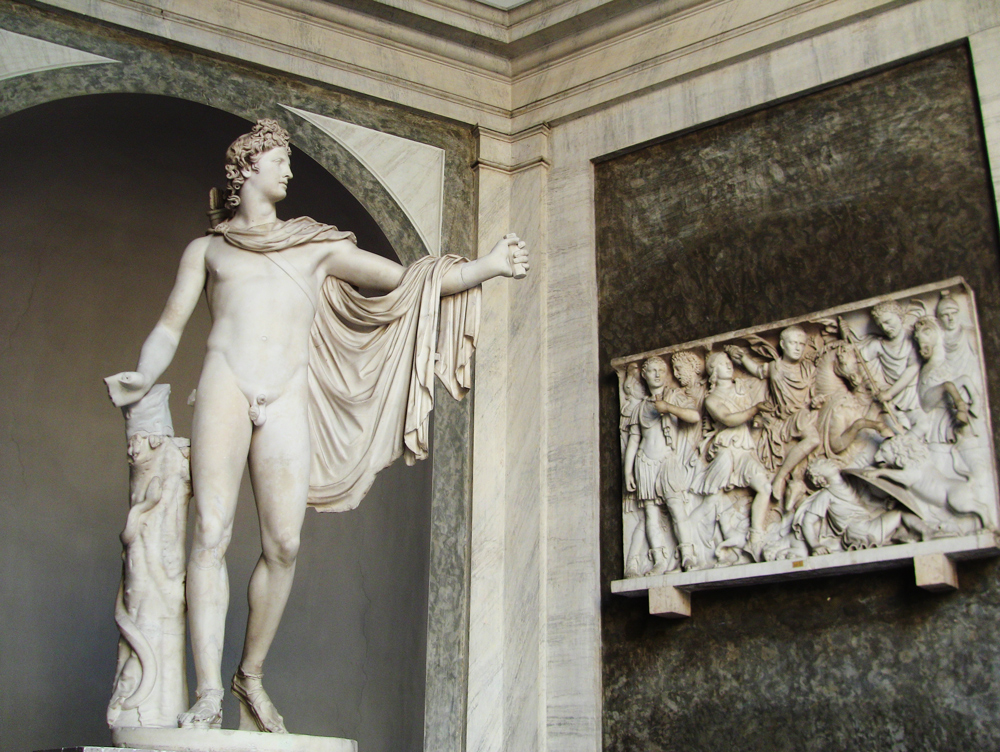
Pope Julius II, who owned the Apollo Belvedere statue even before he became pope, brought it to the Vatican in 1508. The statue is a Roman replica of a Greek bronze statue created by Leochares around 320 B.C. It depicts Apollo in the act of shooting an arrow and looking at where it is heading. The statue’s remarkable details such as the hairstyle and cape are noteworthy for its time. According to Pausanias, the original statue was once situated in the Agora, which was Athens’ central square.
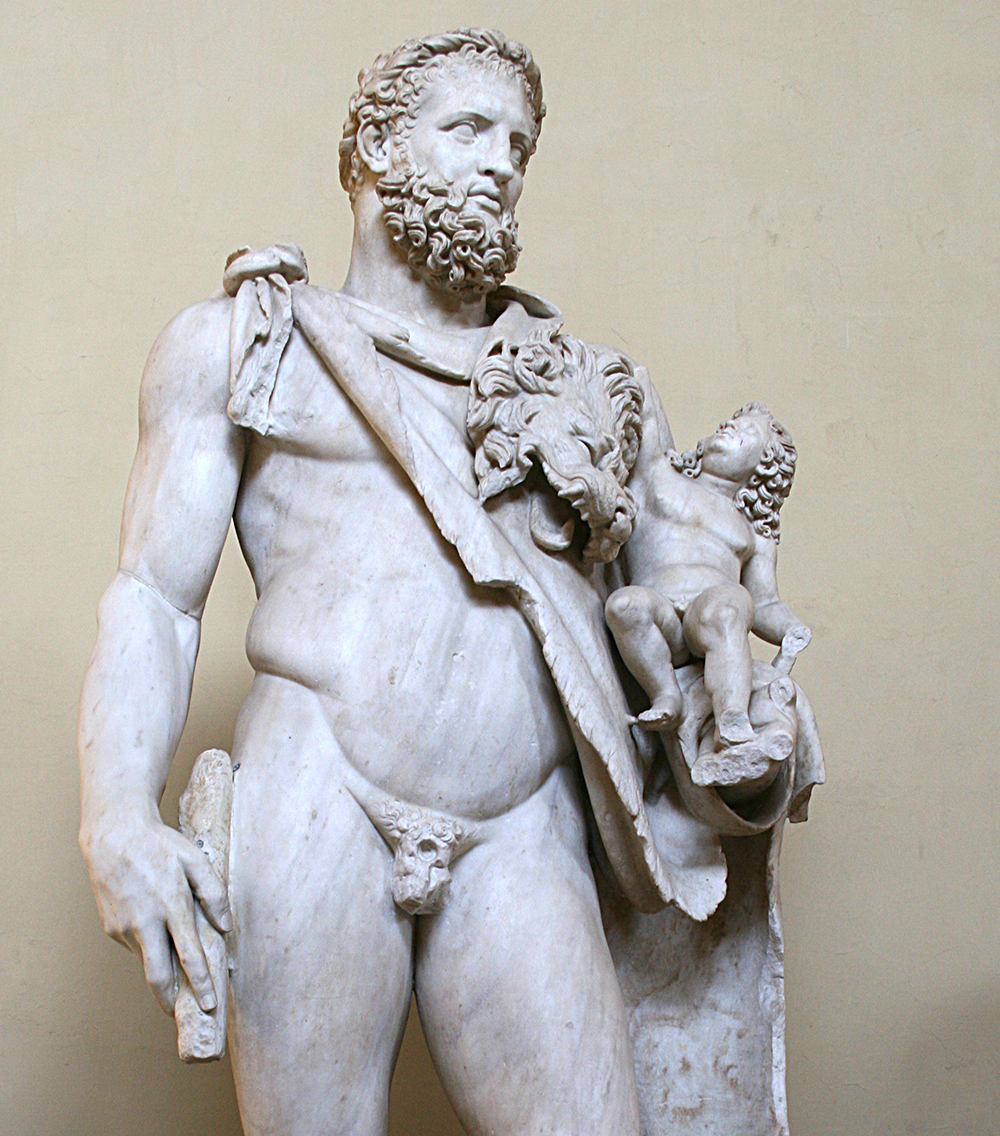
The Vatican collections obtained one of their earliest sculptures, the statue of Heracles carrying his son Telephos, after its discovery in Rome near Campo de’ Fiori. Pope Julius II exhibited it in the Belvedere’s Courtyard of the Statues. The statue serves as a representation of the Roman hero Heracles, signifying the mythological beginnings of Rome and the Romans’ triumph over the ancient Latium tribes.
The Caesar Dictator portrait bust is a depiction of Julius Caesar’s idealized determination, which is thought to be inspired by the portrait busts of Hellenistic rulers. It was created sometime between 30-20 B.C. and is believed to have been based on Caesar’s ultimate physiognomy. Caesar, a politician, soldier, and writer who transformed the republican state of Rome, was the adopted father of Octavian, who later established the Empire. The head was sold to the Vatican Museums by sculptor Vincenzo Pacetti in 1804 and was on display at the Chiaramonti Museum for many years before being restored in 1823.
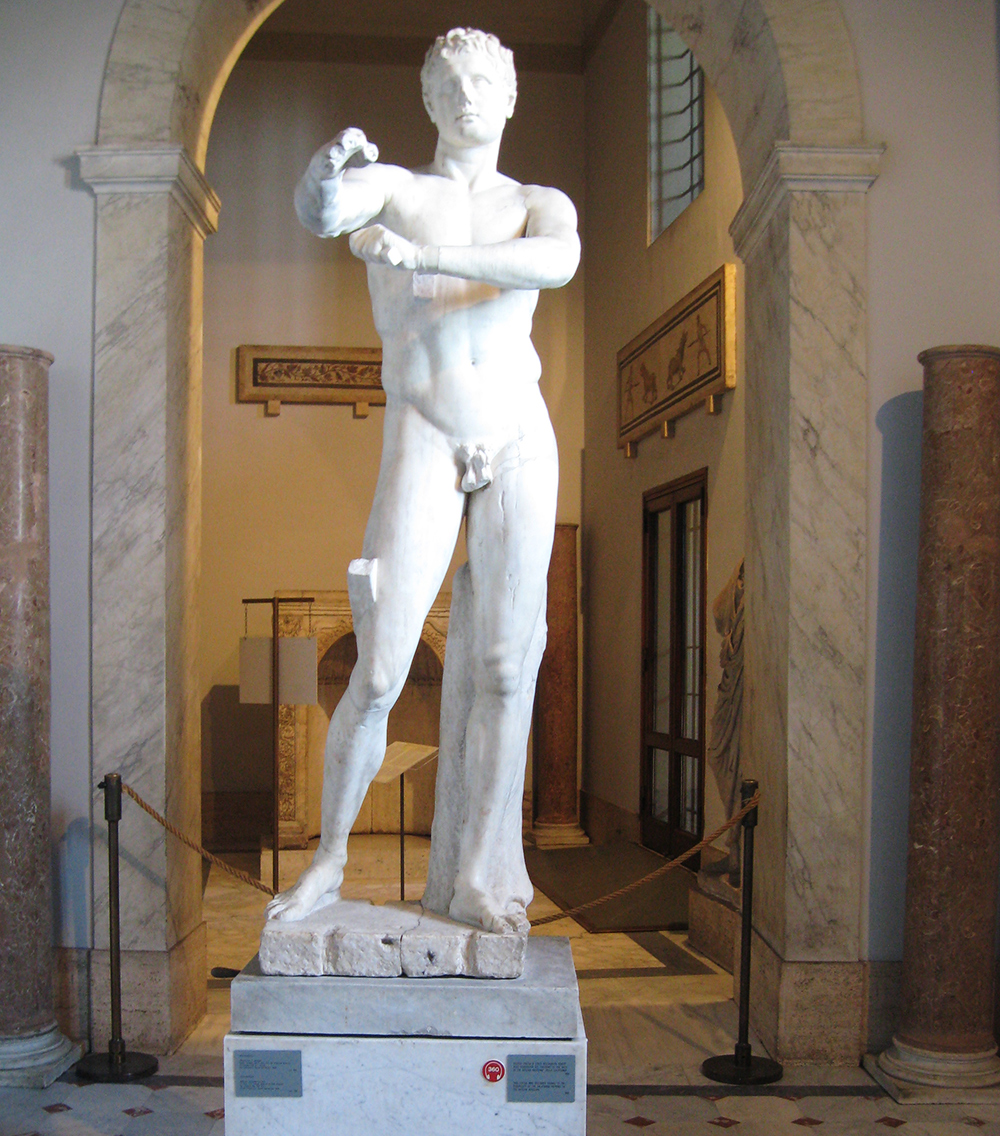
Athletes in ancient times would use oil to clean themselves, followed by dust and a curved instrument called a strigil to scrape it off.
The statue is a replica made in Rome around 50 AD, based on an original bronze sculpture by the famous Greek sculptor Lysippus, which was created around 320 BC. Notable aspects of the statue include the way the athlete’s foot is positioned in the air and the extension of his arm, which creates depth and space in the sculpture. This information is based on records from the Vatican Official Archives.
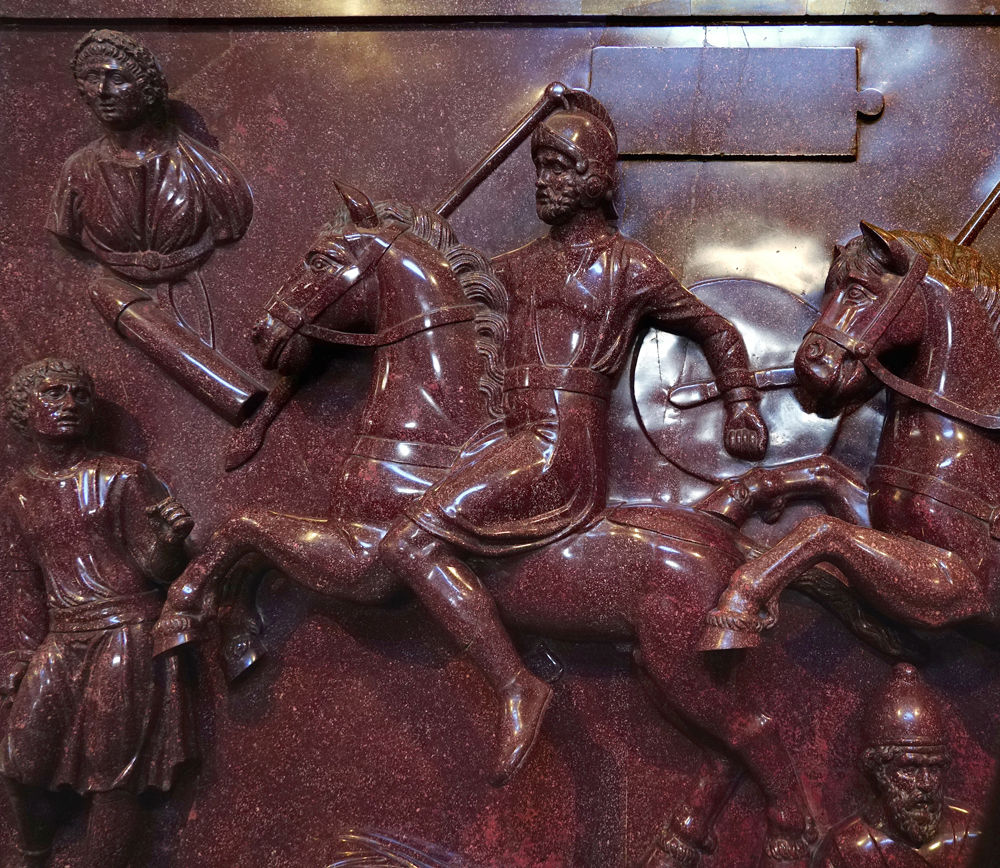
Emperor Constantine the Great’s mother, Helena, passed away in A.D. 335 and was entombed in a mausoleum outside of Rome in Tor Pignattara on via Casalina. The sarcophagus in the mausoleum is made of red porphyry, which was typically reserved for emperors. The decorations on the sarcophagus are military-themed, which is unusual for a woman’s tomb. This has led some scholars to believe that the tomb was originally intended for a man, possibly either Constantine’s father or Constantine himself.
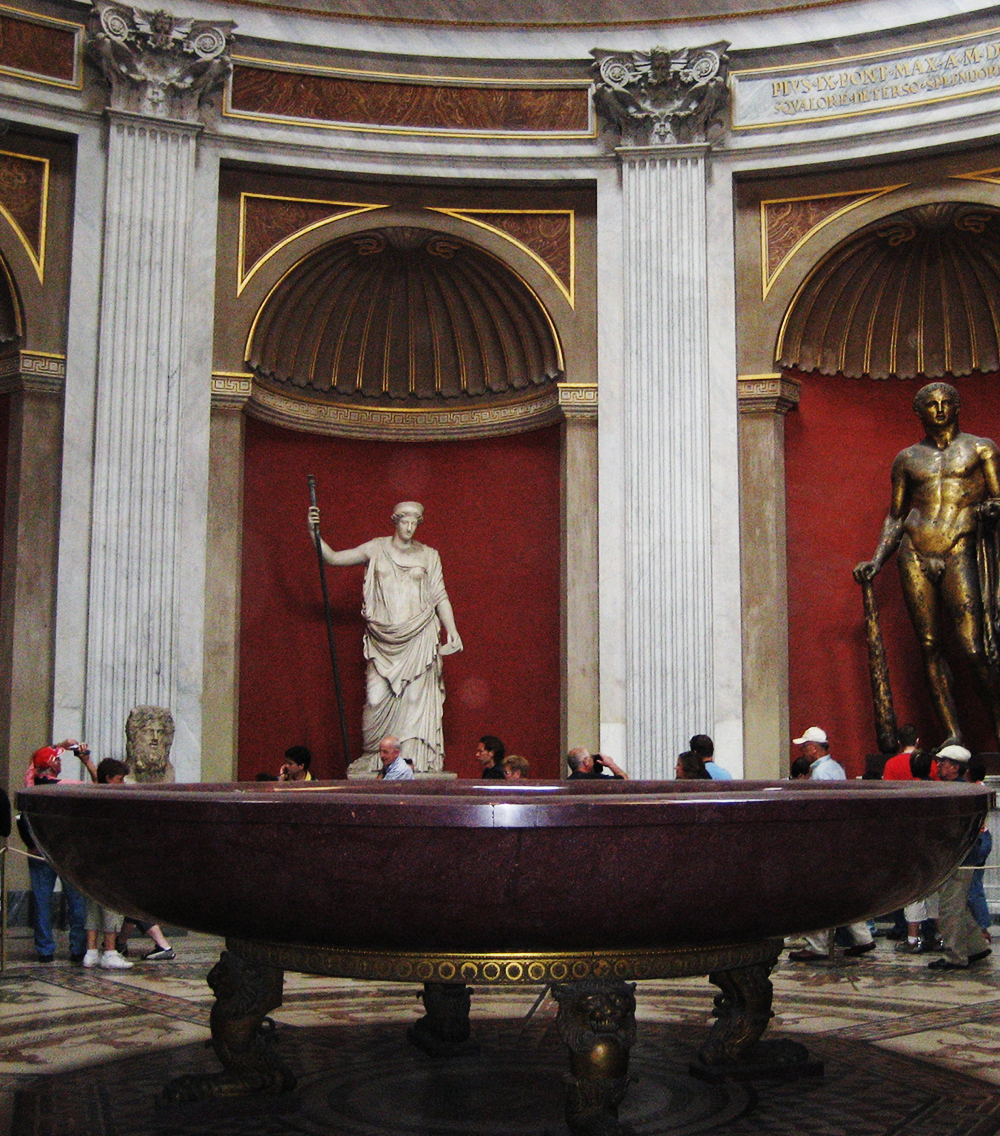
The Red Porphyry bathtub was discovered at the Domus Aurea on Esquiline Hill. It is rumored to be Nero’s bathtub, but there is no solid evidence to support this. The bathtub is made of Red Porphyry, a rare and highly prized purple marble originating from Egypt, reserved for emperors. Although its original purpose is unknown, it is an impressive and beautiful work of marble.
The courtyard itself is named for this massive bronze pinecone that you encounter as soon as you walk outside. It is believed to have been created in the 2nd century A.D. as part of a fountain complex, which is evident from the numerous holes through which water would have been ejected.

In the 16th century, Ennio Quirino Visconti identified a colossal marble head as belonging to Emperor Augustus. The head is believed to have been assembled from several separately worked pieces and is estimated to have been ten meters tall. There has been much debate over the identity of the ancient statue. Colossal portraits of the emperor were common in literary sources and on imperial coinage after his death in 14 AD. Some examples include a statue erected near the Theatre of Marcellus in 22 AD and one located in the Forum of Augustus. The head, discovered on the Aventine Hill in the late 16th century, was likely not originally kept there in ancient Roman times and was later purchased by Ciriaco Mattei.
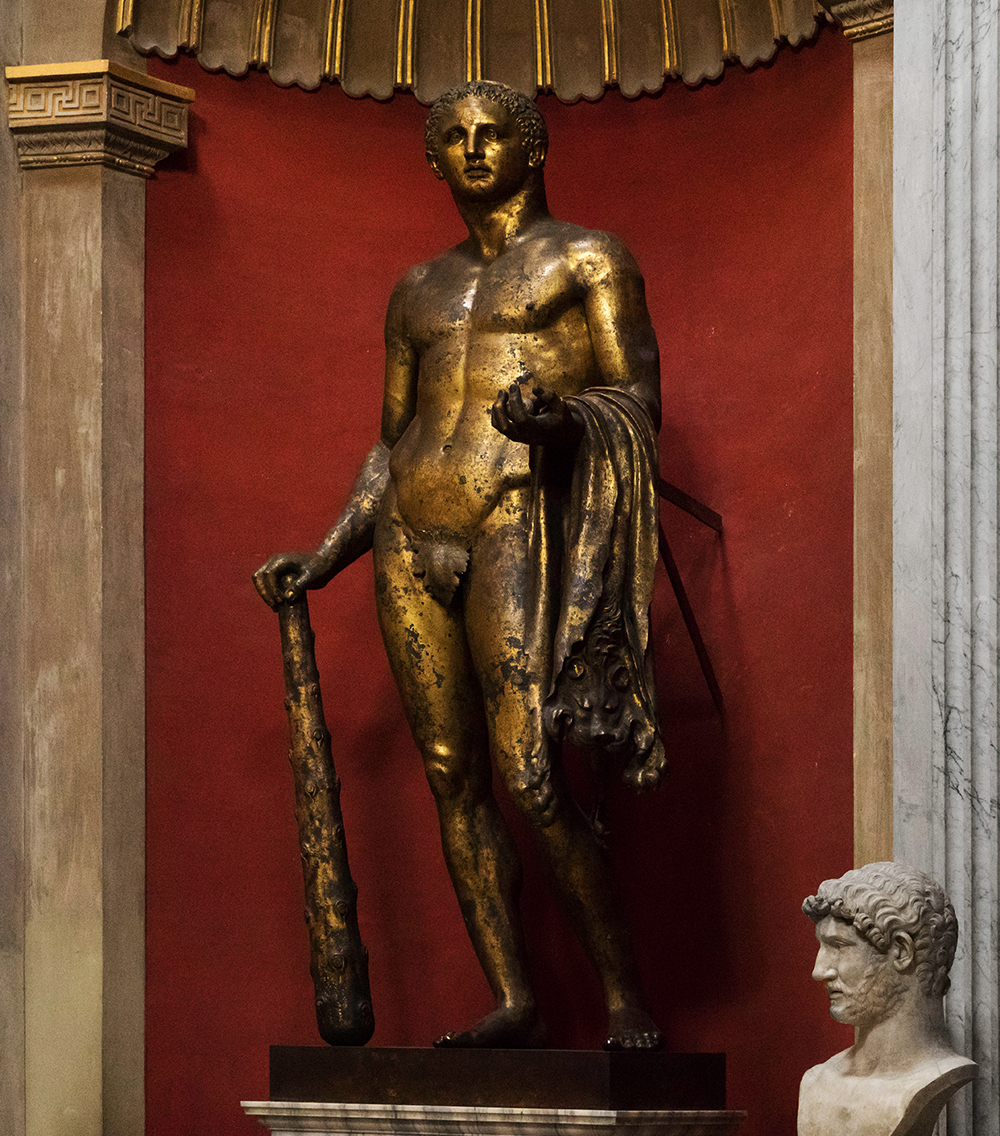
Unearthed in 1864 near the Theater of Pompey in Rome, this gilded statue of Hercules has distinctive features including big eyes, curly hair, and a Nemean lion skin draped over his arm. After it was discovered, the statue was given to Pope Pius IX and is currently on display at the Vatican. The items Hercules is holding, including a club, apples of the Hesperides, and the Nemean lion skin, help to identify the character.
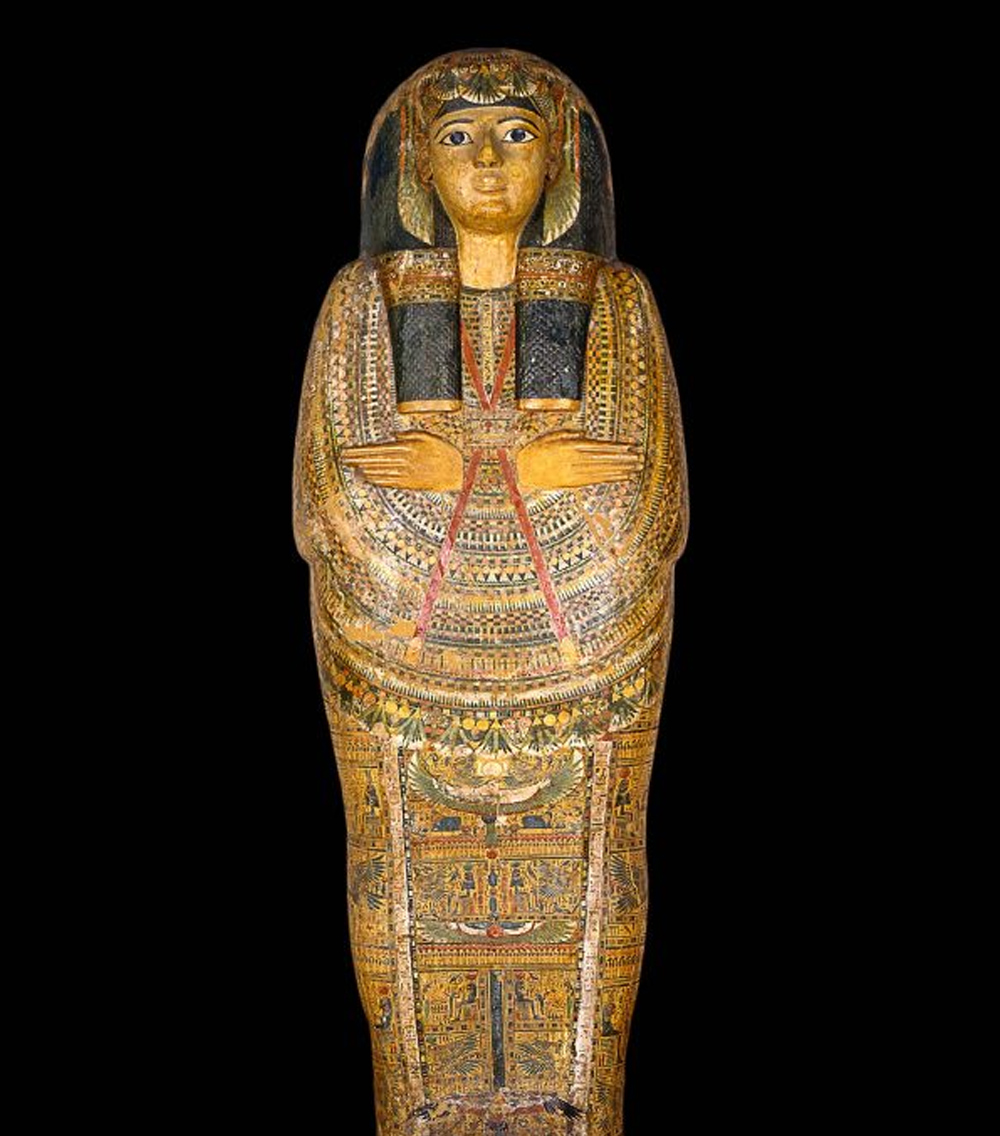
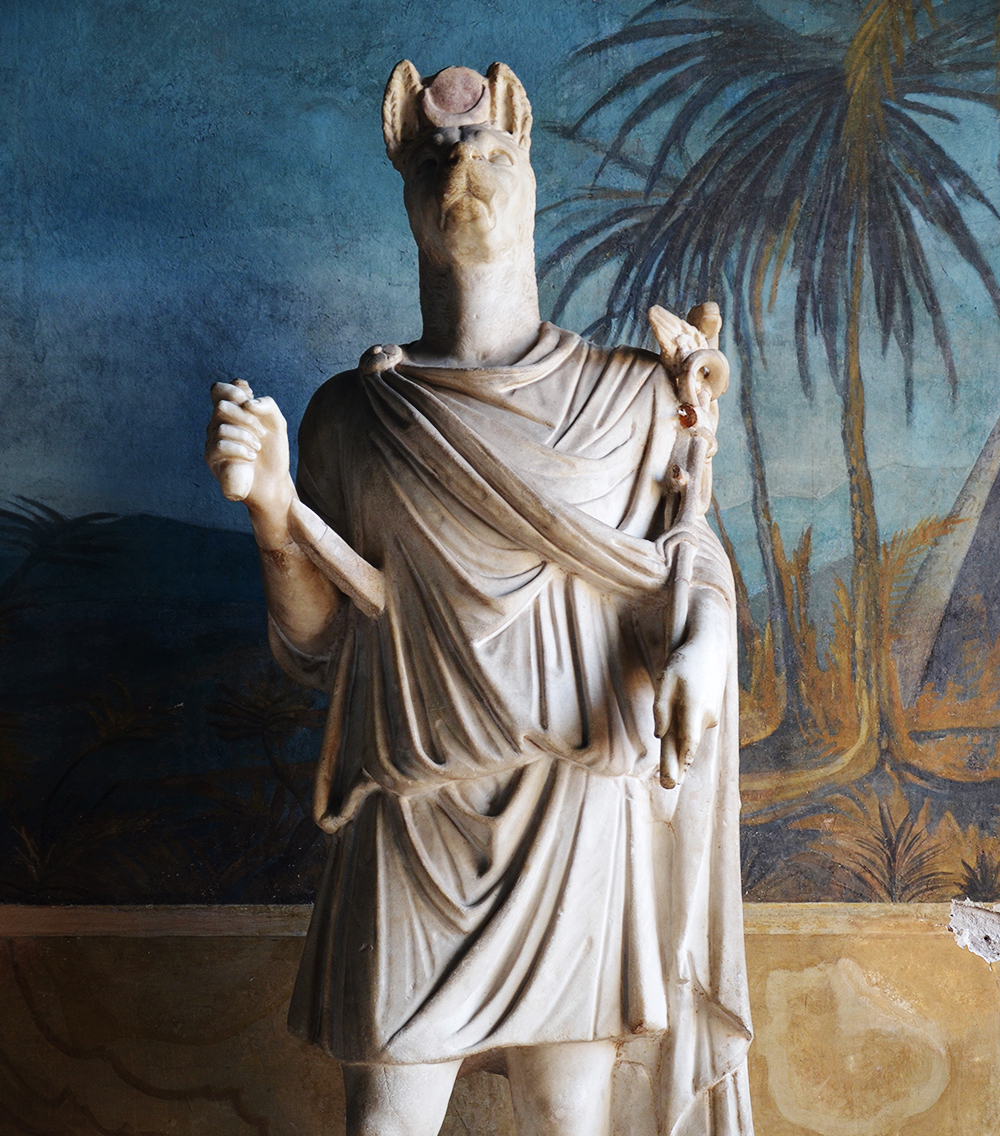
The Gregorian Egyptian Museum, established by Pope Gregory XVI in 1839, exhibits a vast collection of ancient artifacts that were originally from Egypt and were brought to Rome and Villa Adriana in Tivoli during the Imperial Age. With nine rooms, the museum showcases a variety of objects such as sculptures, statues, clay figurines, and bronze items.
Make sure to see:
Monday to Saturday: 9:00 am to 6:00 pm (final entry 4:00 pm)
Every last Sunday of month: 9:00 am to 2:00 pm with free entry.
(excluded holidays)
Full Price Ticket: € 17
Reduced Ticket: € 8
Audioguide (optional): € 7
Audioguide for children (Family Tour) between 6 and 12 years old (optional): € 5,00
The museum also offers guided tours with early access, with a guided tour by an authorized educational guide followed by a delicious American breakfast in the magnificent setting.
St. Peter’s Basilica is located in Vatican City but is separate from the Vatican Museums. Although it’s free to enter, the lines to get in can be long. However, there’s a shortcut from the Museums through a passage to the right of the Sistine Chapel that leads straight to the basilica. This shortcut is usually reserved for guided tour groups, but if you try to sneak in behind one, you might be able to get through.
If you want to explore everything of Saint Peter’s Basilica, do not miss the dome (there is an entrance ticket for this). The view of Rome from the dome is breathtaking. Additionally, visitors can observe people inside the basilica from the dome.
Here are some tips to make the most of your visit:
There are only two entrances to the Vatican museums, Via Della Conciliazione and Via Vaticano.
The Museum route covers a distance of 7 kilometers, so it’s advisable to plan to spend most of the day there. However, even if you spend an entire day at the Museums, it’s not possible to see everything in a single visit. So, first of all we suggest not combining a visit to the Vatican with other places on the same day. With some advance planning, using the museum map wisely and this guide, you can see the main attractions. If you’re short on time, you can see the key highlights in about three hours. Nonetheless, taking a guided tour designed for visitors with a tight schedule is a better option in this case.
Information collected from the official site of the Vatican Museums:
Dress code
For men:
It is advisable to wear a collared shirt when visiting the Museums, although a T-shirt is acceptable as long as it does not have any inappropriate graphics or messages. For bottoms, knee-length pants are required, although shorts are acceptable during summer if they cover the knees. It is impolite to wear a hat inside the Museums.
For women:
Exposing bare arms is not allowed, but a viable option during summer would be to carry a cardigan or a shawl to cover the shoulders inside the Museums. Bottoms such as skirts or pants should cover the knees. Wearing tops that expose the midriff is strictly prohibited.
It is strictly forbidden to take pictures or record videos using any electronic device inside the Sistine Chapel. However, visitors are allowed to take photos and videos inside the Vatican Museums, as long as they refrain from using flashes or professional equipment. This rule is in place to ensure the preservation of the artwork and maintain the serene atmosphere of the Sistine Chapel. It is important to respect this rule to avoid getting reprimanded by the Vatican security personnel, who diligently monitor the visitors’ conduct. Therefore, it is recommended to follow the guidelines and enjoy the beauty of the artwork without disrupting the peaceful ambiance of the place.



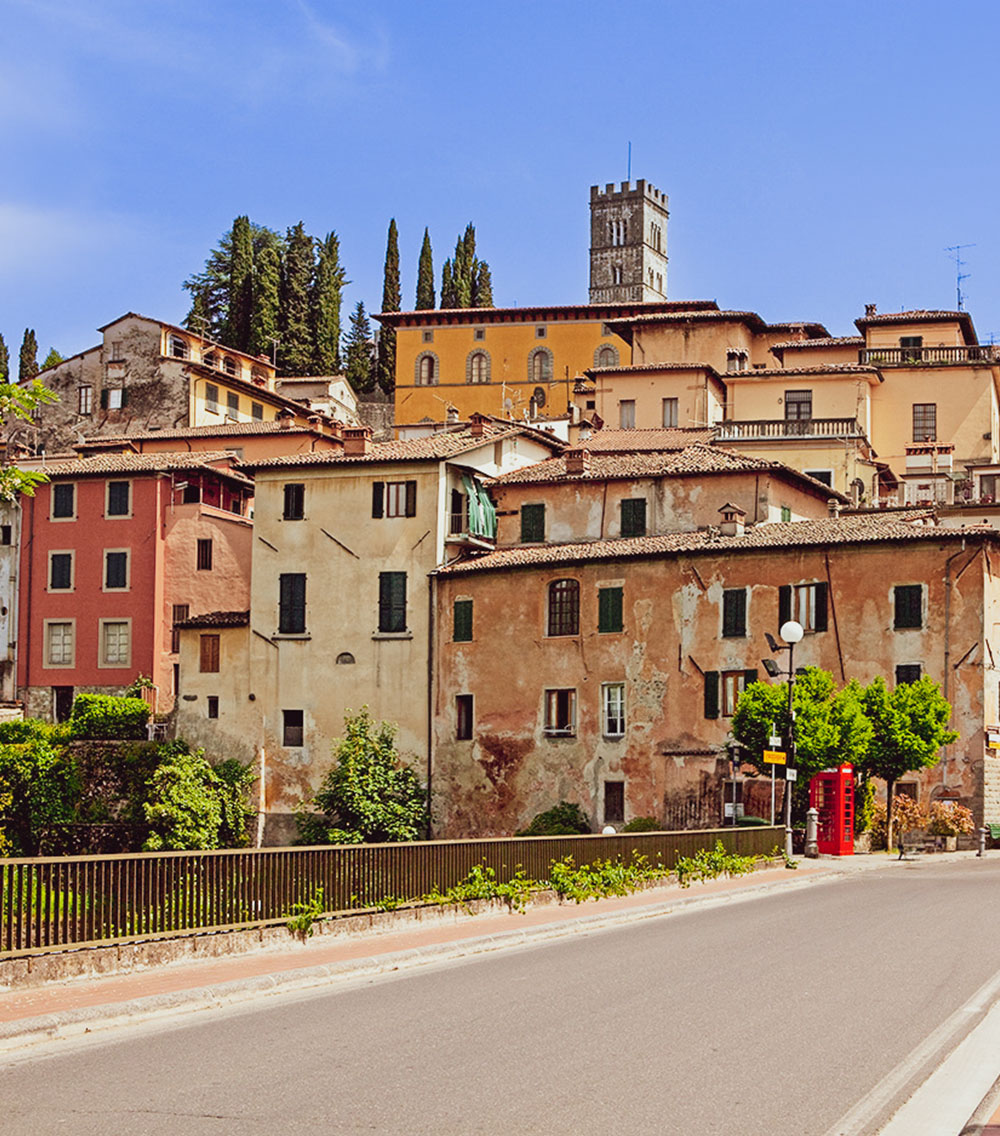

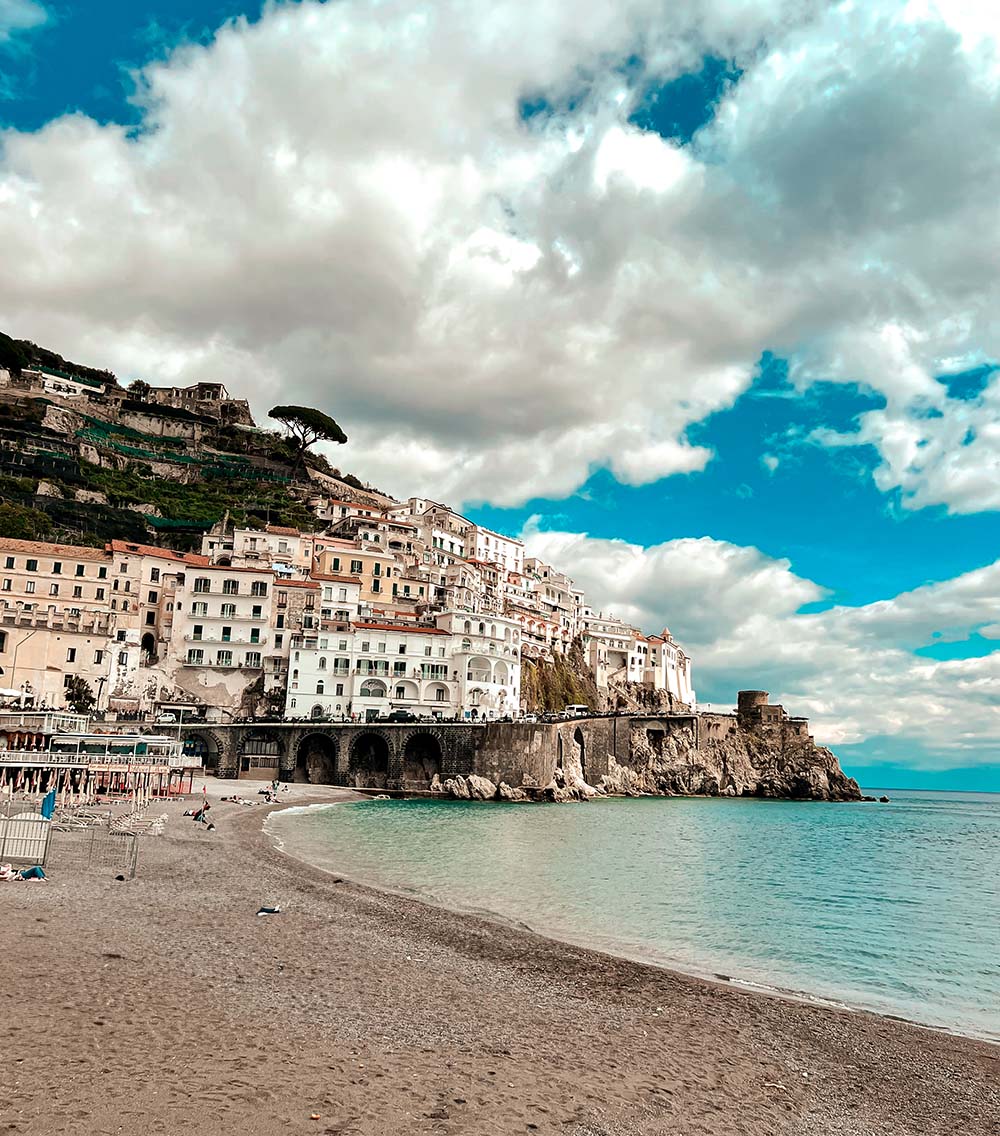

No Comments